 Your new post is loading...
 Your new post is loading...

|
Scooped by
Gust MEES
November 15, 2017 12:04 PM
|
Détectée par le spectrographe HARPS, installé sur le télescope de 3,6 mètres de l'ESO au Chili, la planète orbite autour d'une étoile naine (Ross 128) en 9,9 jours. Selon les chercheurs, Ross 128b est susceptible d'héberger des signes de vie: elle a une masse similaire à celle de la Terre (1.35 plus massive) et "sa température de surface pourrait également être proche de celle de la Terre", donc peut-être compatible avec la présence d'eau à l'état liquide indispensable à la vie telle qu'on la connaît. De plus, cette nouvelle planète orbite autour d'une étoile "calme", son atmosphère a donc une chance d'avoir résisté aux vents et éruptions stellaires. Learn more / En savoir plus / Mehr erfahren: https://www.scoop.it/t/21st-century-innovative-technologies-and-developments/?&tag=planet

|
Scooped by
Gust MEES
October 30, 2017 4:49 PM
|

|
Scooped by
Gust MEES
April 28, 2017 7:57 AM
|
Chinese and European space agencies have come together to consider the possibility of a new joint base on the Moon.
Representatives from both groups, China's space agency and the European Space Agency (ESA) have begun discussing collaborative projects including the moonbase alongside other joint schemes, and as China continues to grow in the space exploration arena, a human outpost could benefit both parties. Learn more / En savoir plus / Mehr erfahren: http://www.scoop.it/t/21st-century-innovative-technologies-and-developments/?&tag=Space

|
Scooped by
Gust MEES
April 21, 2017 1:00 PM
|
More than 750,000 pieces of dangerous debris are now orbiting Earth and threatening the future of spaceflight, the largest ever conference on space rubbish has heard.
The European Space Agency (ESA) appealed to satellite operators and space agencies to clear up their retired crafts, many of which could impact launches, and are in danger of hitting the International Space Station.
“Only about 60 per cent of the satellites that should be disposed of at the end of their missions under current guidelines are, in fact, properly managed,” Dr Holger Krag, head of ESA’s debris office told the European Conference on Space Debris in Germany. Learn more / En savoir plus / Mehr erfahren: http://www.scoop.it/t/21st-century-innovative-technologies-and-developments/?&tag=Space+Junk

|
Scooped by
Gust MEES
April 13, 2017 4:06 PM
|

|
Scooped by
Gust MEES
April 4, 2017 3:38 PM
|
DEEP SPACE GATEWAY:
Nasa plant Raumhafen zwischen Erde und Mond
Zum Mars bitte hier umsteigen: Die Nasa will eine Raumstation zwischen Erde und Mond aufbauen, die als Zwischenstation für Missionen im Sonnensystem dienen soll. Boeing ist einer der Partner bei dem Projekt.
Nächster Halt: kurz vor dem Mond. Übernächster Halt: Mars. Die US-Raumfahrtbehörde National Aeronautics And Space Administration (Nasa) will eine Raumstation aufbauen, die als Zwischenstation für Weltraummissionen dienen soll. Boeing zeigt, wie diese aussehen könnte. Learn more / En savoir plus / Mehr erfahren: http://www.scoop.it/t/21st-century-innovative-technologies-and-developments/?&tag=Space

|
Scooped by
Gust MEES
February 22, 2017 2:29 PM
|

|
Scooped by
Gust MEES
February 1, 2017 11:51 AM
|

|
Scooped by
Gust MEES
September 27, 2016 4:56 AM
|
Astronomen der US-Raumfahrtbehörde Nasa haben nach eigenen Angaben weitere Anzeichen für die Existenz von Wasserdampf-Geysiren auf der vereisten Oberfläche des Jupiter-Monds Europa entdeckt. Europa, einer der mehr als 50 Monde des Gasgiganten, gilt laut Nasa als einer der "Top-Kandidaten" für die Existenz von Leben außerhalb der Erde.
Europa ist etwas kleiner als der Erdmond und vollständig von Eis bedeckt. Unter dem Eispanzer vermuten Astronomen einen bis zu 100 Kilometer tiefen Ozean, der mehr Wasser enthält als alle irdischen Meere zusammen. Learn more / En savoir plus / Mehr erfahren: http://www.scoop.it/t/21st-century-innovative-technologies-and-developments/?tag=Space

|
Scooped by
Gust MEES
June 27, 2016 8:33 PM
|
New findings from NASA’s Curiosity Rover provide evidence that significant amounts of oxygen once permeated the atmosphere of ancient Mars. The Red Planet, it would seem, was more Earth-like than we thought.
Using the ChemCam instrument atop Curiosity, scientists at the Los Alamos National Laboratory have discovered high levels of manganese oxides in Martian rocks. The rover made the discovery in mineral-filled cracks in sandstones in the Kimberley region of Gale crater. The presence of this chemical element suggests that high levels of free-floating oxygen once existed on Mars, and that in addition to having a warmer climate and lakes of liquid water, this planet was once quite Earth-like in terms of its chemical composition. Learn more / En savoir plus / Mehr erfahren: http://www.scoop.it/t/21st-century-innovative-technologies-and-developments/?tag=Mars

|
Scooped by
Gust MEES
June 4, 2016 6:29 AM
|

|
Scooped by
Gust MEES
May 29, 2016 5:35 PM
|
Ein internationales Forschungsteam hat erstmals die Aminosäure Glycin und Phosphor in der Gaswolke des Kometen 67P/Tschurjumow-Gerassimenko nachgewiesen.
Ein internationales Forscherteam konnte sie nach der Auswertung von Massenspektren der Rosetta-Mission zweifelsfrei die Aminosäure Glycin, Methylamin, Ethylamin und Phosphor in der Gaswolke um den Kometen 67P/Tschurjumow-Gerassimenko nachweisen. Das berichten sie in der aktuellen Ausgabe des Fachmagazins Science Advances.
Obwohl mittlerweile mehr als 140 verschiedene organische Moleküle im All nachgewiesen wurden, sind Aminosäuren bisher nicht darunter. Sie bilden die Grundbausteine von Muskeln, Bindegewebe, Hormonen und Enzymen. Bei dem bislang einzigen Nachweis von Glycin in Kometen-Staub, den die Stardust-Mission der NASA 2004 vom Kometen Wild 2 geborgen hatte, konnte eine irdische Kontamination nicht ausgeschlossen werden.
Lebensbausteine aus dem All
Der Nachweis von Glycin dürfte die These stärken, dass das Rohmaterial für die Entwicklung des Lebens über Kometen auf die Erde gelangte. Dafür spricht unter anderem die weite Verbreitung von Kohlenstoffverbindungen im Weltraum, berichtet Birgit Herden in der aktuellen Ausgabe von Technology Review ("Lebt da was?", TR 6/16 S. 26).

|
Scooped by
Gust MEES
January 23, 2016 10:45 AM
|
Blue Origin hat es geschafft, ein und dieselbe kommerzielle Trägerrakete zum zweiten Mal erfolgreich zu landen. Damit schnappt Jeff Bezos seinem Konkurrenten Elon Musk (SpaceX) einen weiteren Meilenstein der kommerziellen Raumfahrt vor der Nase weg.
|

|
Scooped by
Gust MEES
November 15, 2017 8:38 AM
|
In Bremen entsteht zurzeit ein Raumschiff, das Menschen künftig tief ins All bringen soll. Mehr als 150 Ingenieure und Techniker bauen beim Raumfahrtkonzern Airbus das Europäische Servicemodul (ESM) zusammen. Gemeinsam mit der Astronautenkapsel bildet es die neue US-Raumfähre “Orion”.
Sie soll Ende 2019 zunächst unbemannt ins All fliegen und den Mond umkreisen. Das Servicemodul beinhaltet das Haupttriebwerk, zudem reguliert es die Temperatur im Inneren der Raumkapsel und sorgt für Strom, Wasser und die Luft zum Atmen. Der erste bemannte Flug ist für 2021 geplant. Learn more / En savoir plus / Mehr erfahren: https://www.scoop.it/t/21st-century-innovative-technologies-and-developments/?&tag=Space

|
Scooped by
Gust MEES
October 2, 2017 3:51 PM
|
We once thought of Mars as a dried up husk of a planet with no significant water resources on its surface. After further study, scientists have discovered the Red Planet has vast amounts of water ice, and there may even be some water flowing on its surface. Mars’ water reserves may even be more accessible than we believed. A new analysis of past NASA data points to water ice near the Martian equator where scientists thought it could not exist.
NASA didn’t have to send a new probe to Mars to figure this out. In fact, the instrument used to obtain this data has long since been retired. Scientists reevaluated data from the NASA Odyssey Spacecraft, which was in operation between 2002 and 2009. The goal of this mission was to map the surface of Mars while also looking for evidence of water. It was used to identify landing sites for surface missions, and to this day still acts as a data relay for the Curiosity rover. Learn more / En savoir plus / Mehr erfahren: http://www.scoop.it/t/21st-century-innovative-technologies-and-developments/?&tag=Mars http://www.scoop.it/t/21st-century-innovative-technologies-and-developments/?&tag=Water

|
Scooped by
Gust MEES
April 22, 2017 6:29 PM
|

|
Scooped by
Gust MEES
April 19, 2017 8:24 AM
|
What goes up, may come down in pieces—and cause some trouble in the process.
As hardware prices and launch costs fall, there’s an increasing trend to launch swarms of satellites into space to monitor our planet and transmit data. But some academics are concerned that the rising numbers may make an existing space junk problem far worse.
At the end of 2016, it was estimated that 1,459 operating satellites were in orbit around Earth. But that number looks set to rise quickly, as companies continue to launch swarms of smaller spacecraft. Earlier this year, for instance, Planet Labs popped 88 of its tiny satellites into space to photograph the planet below.
Learn more / En savoir plus / Mehr erfahren: http://www.scoop.it/t/21st-century-innovative-technologies-and-developments/?&tag=Space+Junk

|
Scooped by
Gust MEES
April 13, 2017 3:36 PM
|
Life on Earth developed slowly over billions of years, and often it seems the modern process of looking for life beyond our own planet moves at a similarly glacial pace. But on Thursday, scientists announced another tantalizing lead in our species-wide quest to answer that great existential question: Is anyone or anything else alive beyond this rock of ours?
Researchers from NASA's Cassini mission say something's happening in a hidden ocean beneath the icy shell of Saturn's moon Enceladus. It's too early to say anything is swimming around down there, but it's becoming clearer that many of the ingredients that allow life to survive in deep, dark underwater environments on Earth can also be found on the Saturnian satellite. Learn more / En savoir plus / Mehr erfahren: http://www.scoop.it/t/21st-century-innovative-technologies-and-developments/?&tag=Space

|
Scooped by
Gust MEES
April 4, 2017 3:27 PM
|
Die NASA hat mal wieder Großes geplant: In fünf Jahren will die US-Raumfahrtbehörde damit beginnen, einen Weltraumbahnhof zu bauen. Der soll um den Mond kreisen und Reisen zu weit entfernten Punkten im All ermöglichen – beispielsweise zum Mars.
Die NASA stellte kürzlich die Baupläne für das beeindruckende Bauprojekt vor: Der Weltraumbahnhof wird in der Umlaufbahn des Mondes entstehen – und das schon im Jahr 2023. Dann wird der Bau beginnen. Ist die Weltraumbasis fertig, wird sie Zwischenstopps auf dem Weg zu fernen Zielen im All möglich machen. Und dank Wohn- und Forschungsräumen werden auch längere Aufenthalte und Experimente im All für Astronauten kein Problem mehr darstellen. Learn more / En savoir plus / Mehr erfahren: http://www.scoop.it/t/21st-century-innovative-technologies-and-developments/?&tag=Space

|
Scooped by
Gust MEES
February 22, 2017 2:05 PM
|

|
Scooped by
Gust MEES
September 30, 2016 2:17 PM
|
The evidence is mounting that our solar system is rife with oceans. Last week, scientists reported that Pluto could have an insanely deep liquid water swimming pool beneath its surface, and on Monday, NASA revealed new evidence for geyser activity on icy Europa. Now, another frozen moon is poised to join the club of outer space scuba retreats: Dione. Learn more / En savoir plus / Mehr erfahren: http://www.scoop.it/t/21st-century-innovative-technologies-and-developments/?tag=Space

|
Scooped by
Gust MEES
August 18, 2016 4:19 PM
|
La Chine est-elle en passe de trouver une parade contre le cyberespionnage ? Ce lundi 15 août, elle a lancé un satellite baptisé Quess (pour Quantum Experiments at Space Scale, en anglais) et équipé d’un système de communication quantique qui pourrait bien révolutionner la sécurité des communications. Ce satellite sera utilisé pour transmettre des clés de chiffrement quantiques, virtuellement impossibles à intercepter par un tiers. Il s’agit là d’une technologie de cryptage particulièrement efficace pour protéger le contenu des données et qui intéresse également les gouvernements européens, canadiens et américains. Learn more / En savoir plus / Mehr erfahren: http://www.scoop.it/t/21st-century-innovative-technologies-and-developments/?tag=Quantum-Computing

|
Scooped by
Gust MEES
June 12, 2016 2:35 PM
|
The United States and the United Arab Emirates (UAE) announced an agreement Sunday that would allow the two nations to collaborate on matters of space and aeronautics research, including the potential journey to Mars.
NASA announced the news on its website, saying that officials who met in Abu Dhabi are looking forward to the partnership that they hope will not only strengthen the relationship between the two countries, but also contribute to the field.
“NASA is leading an ambitious journey to Mars that includes partnerships with the private sector and many international partners,” said NASA Administrator Charles Bolden. “I am confident this new framework agreement with the UAE Space Agency will help advance this journey.

|
Scooped by
Gust MEES
May 29, 2016 7:14 PM
|
Europe's comet-orbiting Rosetta spacecraft has hit a potential astrobiological gold mine, sniffing out the amino acid glycine, which is a key building block for life, in the dust surrounding Comet 67P/Churyumov-Gersimenko.
The discovery of glycine, along with precursor molecules methylamine and ethylamine, in 67P's coma confirms previous indirect detections of the same compounds from another comet, Wild 2 (pronounced "vilt-2"). Learn more / En savoir plus / Mehr erfahren: http://www.scoop.it/t/21st-century-innovative-technologies-and-developments/?tag=Space

|
Scooped by
Gust MEES
April 14, 2016 8:40 AM
|
Breakthrough Initiatives has an ambitious new plan to use solar sail nano-satellites to reach an alien star
|



 Your new post is loading...
Your new post is loading...

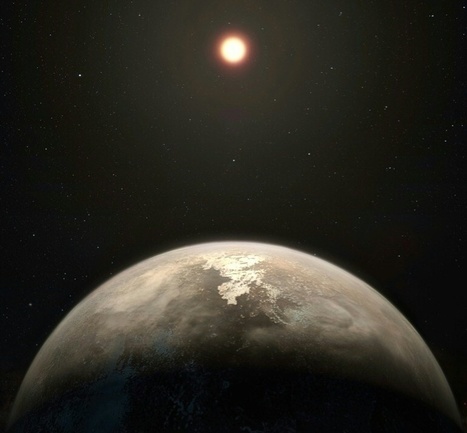

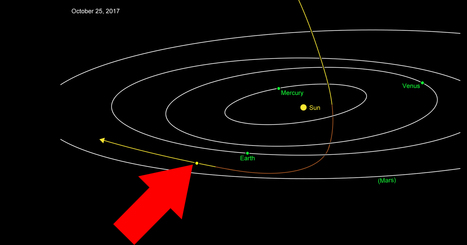
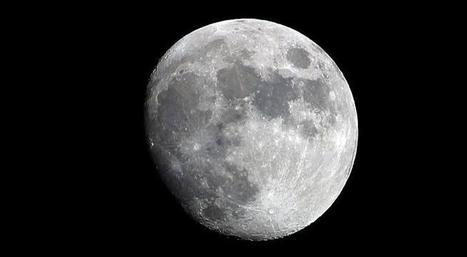


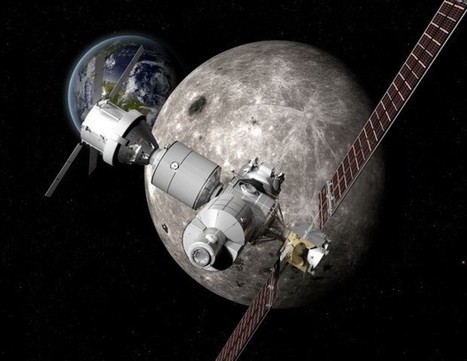
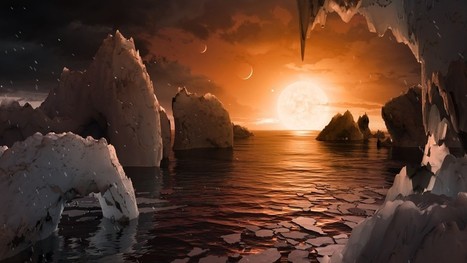
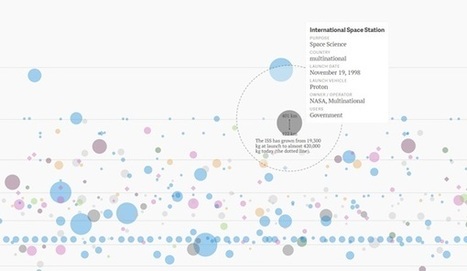



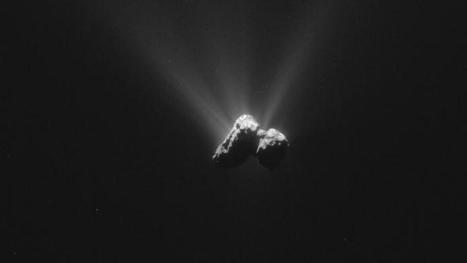
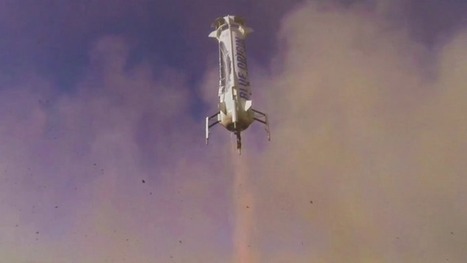
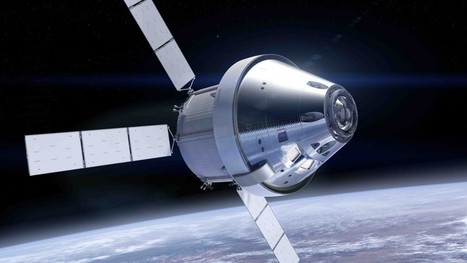


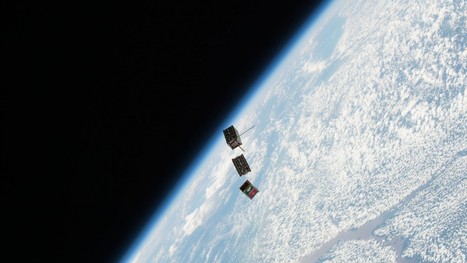
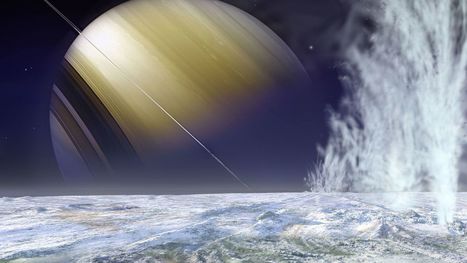
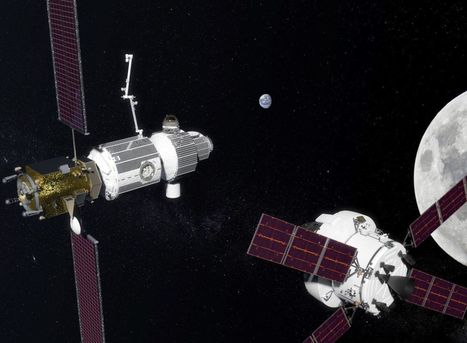
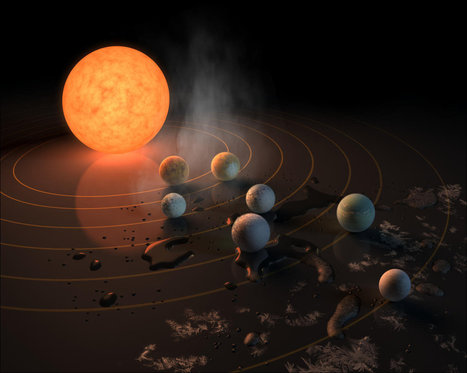




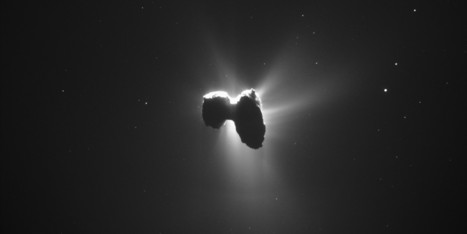
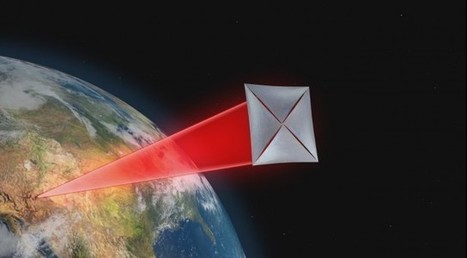





Détectée par le spectrographe HARPS, installé sur le télescope de 3,6 mètres de l'ESO au Chili, la planète orbite autour d'une étoile naine (Ross 128) en 9,9 jours.
Selon les chercheurs, Ross 128b est susceptible d'héberger des signes de vie: elle a une masse similaire à celle de la Terre (1.35 plus massive) et "sa température de surface pourrait également être proche de celle de la Terre", donc peut-être compatible avec la présence d'eau à l'état liquide indispensable à la vie telle qu'on la connaît.
De plus, cette nouvelle planète orbite autour d'une étoile "calme", son atmosphère a donc une chance d'avoir résisté aux vents et éruptions stellaires.
Learn more / En savoir plus / Mehr erfahren:
https://www.scoop.it/t/21st-century-innovative-technologies-and-developments/?&tag=planet